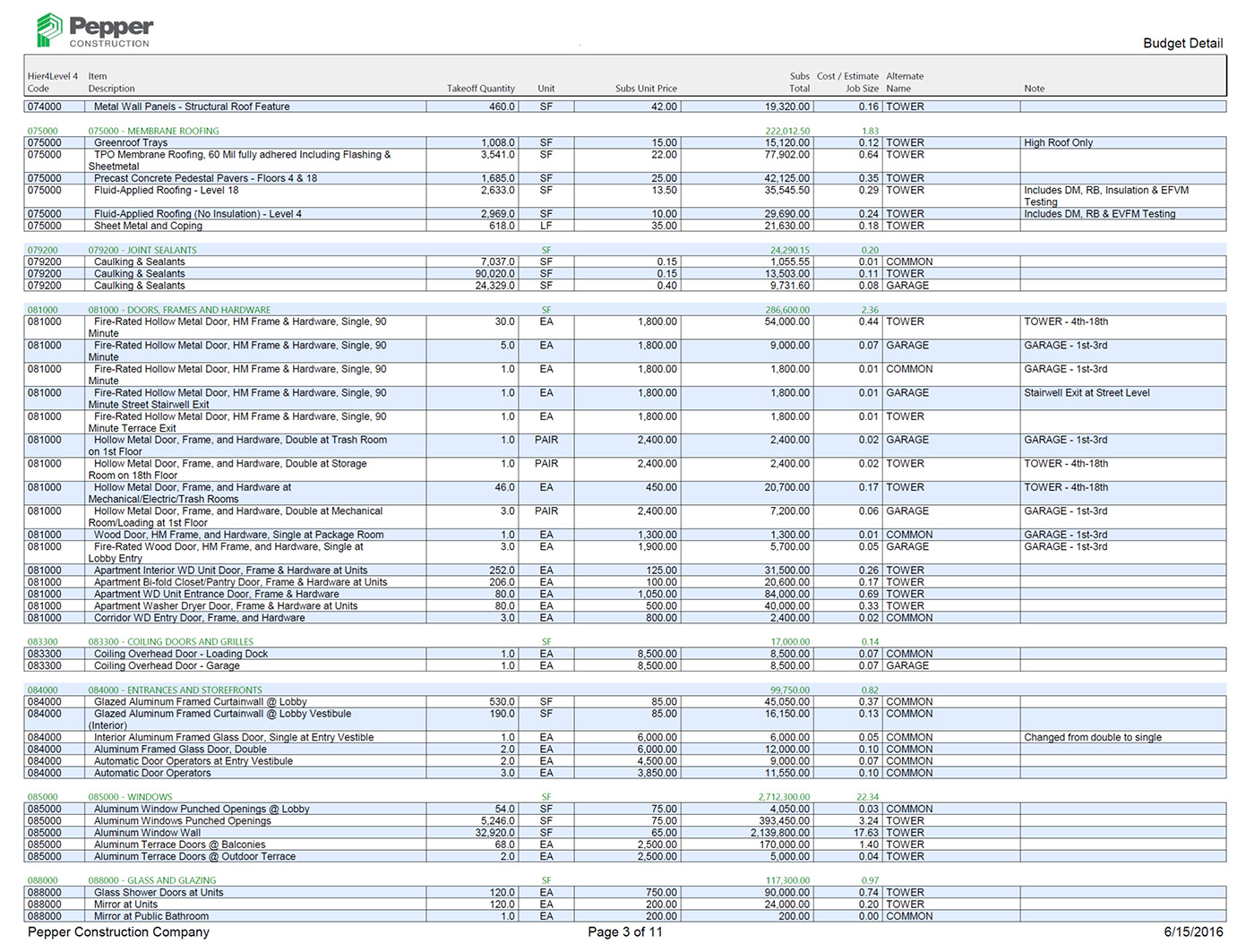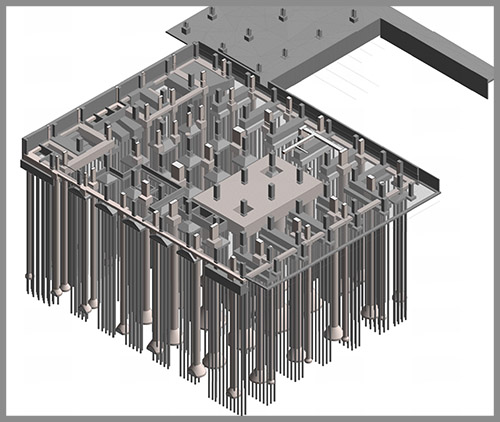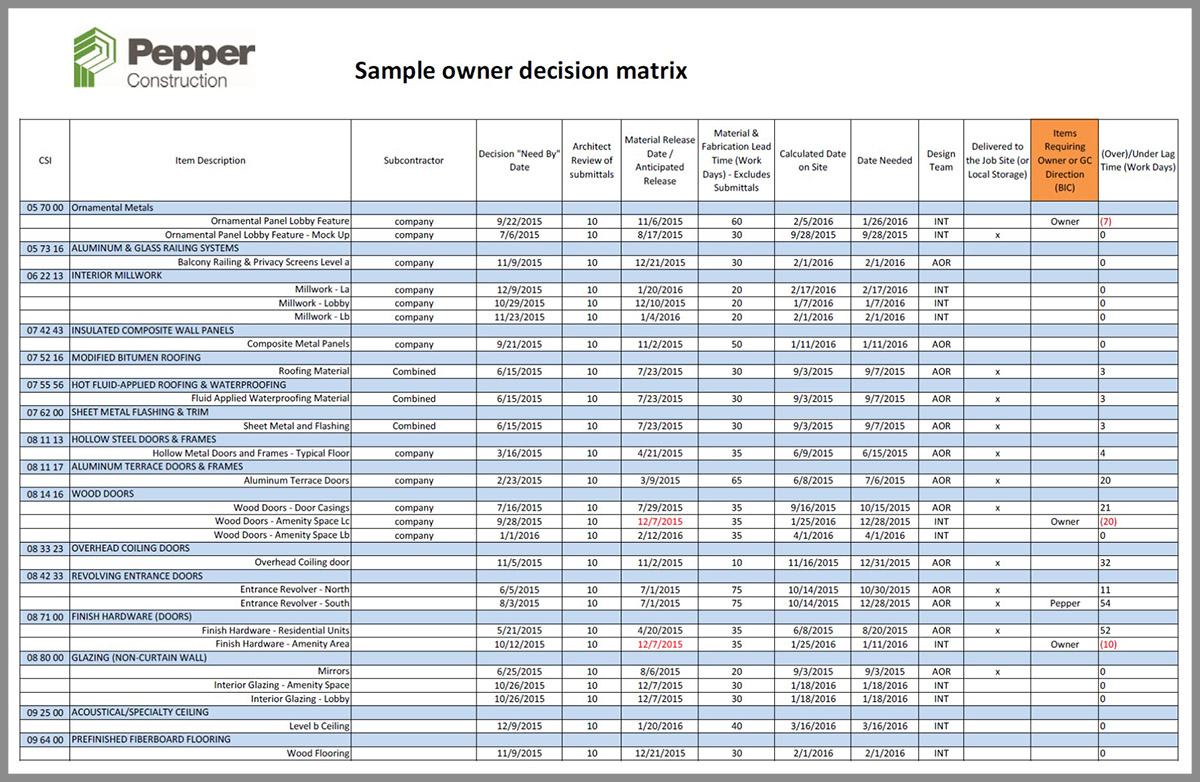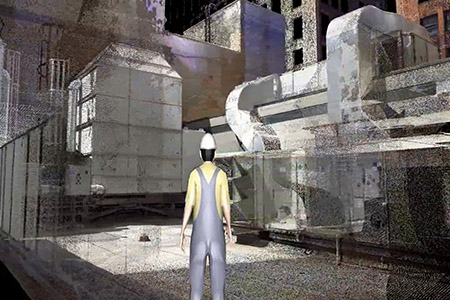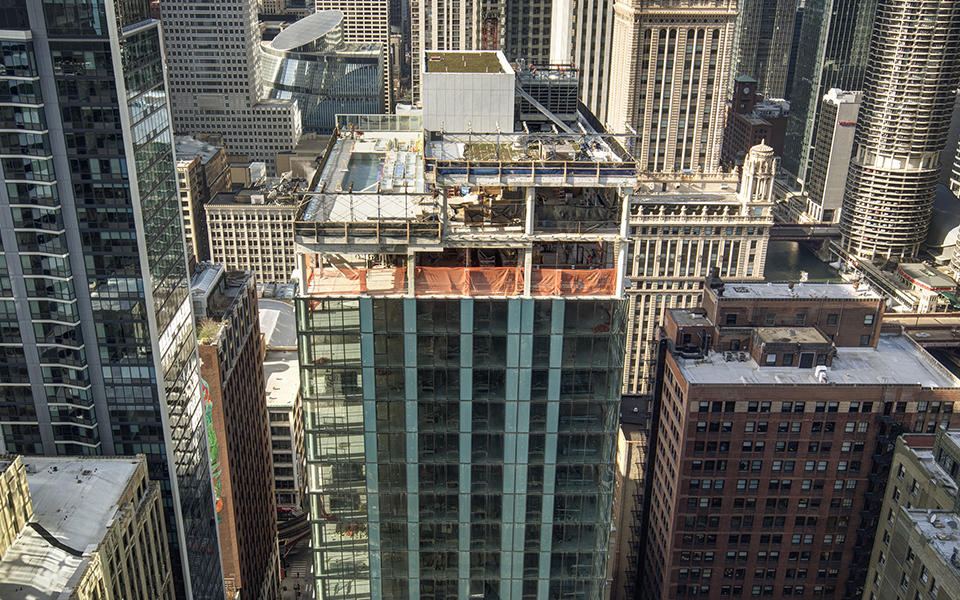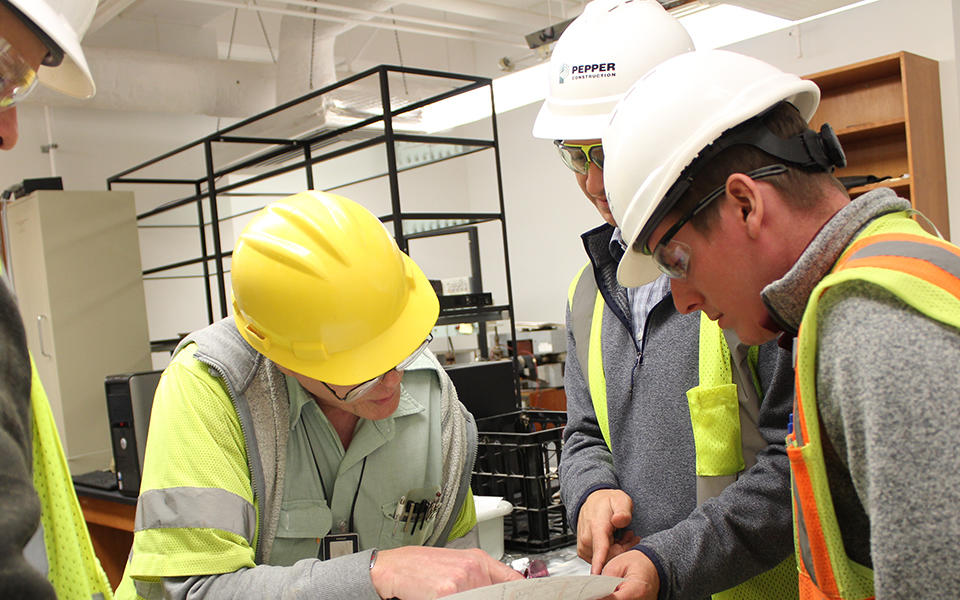MILA at 200 North MichiganVirtual construction & technology, High rise, Preconstruction
Part 1 in a 2-part series: When the stakes are high, how do you know you can trust your contractor to protect your investment?
High-rise apartments are a risky investment – from securing financing to the time it takes to build. Once you decide to build, a lot must happen before you start collecting rent. With so much at stake, how can you get the most out of your construction team and ensure you receive the right guidance for your project?
Contractors fill the important role of answering your how questions to make the project predictable. Obviously, how much will it cost, and how long will it take? But also: How many units do we want? How can we reduce costs to make our returns higher? How can we keep costs low while retaining the design elements that will differentiate the property?
During the process of construction, a contractor provides a budget, schedule, safety and logistics plan… a myriad of services that will be used to deliver the project. Check any website; it’s a lot of the same.
While these are important, there are seven insights that separate average outcomes from the best. These insights lead to smart questions that surface the right answers at the right time – resulting in a predictable project, which is what every owner wants.
01. Micro economics
As you predict future demand and lease rates, your contractor should be aware of what’s going on in the market. They should understand the reasons behind your decisions, which will allow them to gather the right information and present it in a way that helps you:
-
Demographic and lifestyle preferences of renters – The current surge in construction activities is largely due to Millennials’ desire for close proximity to restaurants, night life and their jobs. Urban developments are also attracting baby boomers. Each demographic has their own space preferences. Right now the trend is to allocate more square footage to common areas and less to the apartment units.
-
Leasing trends - Peak times for leasing are in the spring and summer, with activities slowing after September and over the holidays. It’s important to develop a schedule that meets or beats this seasonal deadline.
-
Building comps – Knowing the market supply and the amenities, square footages and aesthetics that you will be competing against will allow your partners to offer suggestions to help position your building.
-
Material trends – The contractor’s ability to negotiate pricing, propose comparable alternates, understand lead times and current market conditions will ensure quality and on-time turnover.
-
Code, zoning and permit requirements – Knowing the rules and having the right city contacts allows for creative problem-solving and prevents delays during the crucial permitting and occupancy phases of the project.
02. Conceptual estimating
Owners hire us at various points in the design process – some during the programming phase and others when construction documents are complete – depending on the project. A general contractor’s early involvement can both negate potential issues and improve the value of your investment. Contractors serve an important role of providing a bankable estimate that owners can use to secure financing.
His advice is especially true in high rise residential construction, where you need to secure financing in order to proceed with the project. Regardless of how the project is financed, accurate information is needed to fulfill the terms and manage cash flow. It’s important to work with a team who can provide sufficient detail to support the financial proposal and also be able to build from it. Details provide confidence and help eliminate surprises. In other words: Do take-offs to build the scope instead of taking off the scope.
03. Branding
Every development has sacred ground – custom features that are designed to give an identity to the building and help sell the space. Owners are willing to put different features on the chopping block, but these will go untouched.
The better a contractor understands your brand, the more easily they will recognize the significance of these features and the reasons why they are special.
Why is this important? I’ve never worked on a project where the original design fit within the original budget. All have required some analysis to bring the design within budget.
Knowing which features are sacred and why allows us to address the cost without compromising the outcome.
For example, maybe the color, size and shape of a lobby design feature are non-negotiable, but the owner is open to considering alternative materials that offer the same texture and look. Maybe the parts that you don’t see, like mechanical systems or the support structure can be changed with a little creative thinking.
04. Site conditions
Every site is different. In the city of Chicago where there is no virgin land, every site is a pre-developed site and typically has existing foundations. Since site conditions have a significant impact on cost and schedule, the experience of the contractor is crucial.
Example: On one recently completed project, the site was constrained on all four sides. One side had an existing building, one side had a bridge that was supported with shallow foundations and two sides were lined by streets packed with existing utilities.
Compounding these perimeter conditions, the inside of the site contained an extensive foundation system from the previous structure. Hundreds of timber piles extended more than 80 feet deep and were topped off with concrete pile caps, some more than eight feet thick.
The proposed foundation system called for the removal of the existing foundations and installation of a costly earth retention system. The work would have also been risky.
When wood timber piles are removed, a condition known as “squeeze” can occur causing the surrounding soils to squeeze into the space previously occupied by the wood piles. This condition can adversely impact surrounding structures by causing excessive settlement.
We mitigated this risk by working with the project structural engineer, to come up with a scheme to lay out new foundations around the existing piles. Then, we used transfer mats to support the columns above. Not only did this solution reduce the risk, it was less expensive and saved time.
The alternate approach also allowed for reuse of an existing foundation wall on one side of the site, therefore eliminating a significant amount of costly earth retention work.
05. Decision-management
Owners like to delay decision-making to the last point possible – evaluating options down to the wire because the market, particularly for interior finishes, changes so quickly. They also want to know how much of their wish list they can afford.
The timeliness of decisions can make or break your ability to get the materials you want in time. Delays and lulls can add up in cost as well as schedule impacts. And ultimately, it can determine your ability to open in time to secure leases when renters are ready to sign.
So how do you know when you really need to make a decision? Generally, design and procurement milestones are included in the critical path method (CPM) schedule, which shows sequential, cause-and-effect relationships between activities. One action can cause a chain reaction that can be felt downstream.
The CPM schedule starts with the installation date, back up procurement time and include time for fabrication and shipping. Time for submittal creation and submittal review should also be added.
The CPM schedule is helpful to keep the contractor on pace, but unless they are trained to read a schedule, owners have a hard time deciphering the connections. Many owners long for a cheat sheet that identifies what decisions need to be made and when.
At Pepper, we create a matrix so owners can see decision dates for every material and the logic behind them. From there, the information can be organized in several different forms. We can highlight decisions needed in the next 30 days, sort by level of priority or even highlight decisions that are past due. Shared weekly, this tool allows owners to stay focused on what decisions matter most. We can also break down elements into multiple decision dates.
For example, a decorative entry canopy may be one of the last items installed on the project site. However, the structural support brackets and electrical rough-in may need to be defined early on so they can be placed within the concrete frame that is poured early in the project schedule.
Other components of the canopy such as the material types, lighting and finishes may have a later decision date since they will be installed later in the project. Breaking down individual design elements and assigning multiple decision “need by” dates allows the design team and owner more flexibility with their decision making, while ensuring that the project schedule is not adversely impacted.
06. Ideas
The final insight varies from project to project and is the hardest to quantify because often it’s associated with what didn’t happen. It’s the intangible value that can’t be defined ahead of time and must be experienced over the course of the project. This insight comes in the form of ideas – that result in cost savings or increased profit potential.
Ideas can eliminate unknowns, which can be costly. When they arise, they can either add cost or expose unrealized opportunities. For example, if lake views are a selling feature, your contractor can analyze conditions and help you look ahead to preserve or enhance the view.
Laser scanning can be used to inform the design of a new building. How?
On a high rise project in downtown Chicago, Pepper scanned the sight lines on an amenity floor where a planned urban garden would overlook the surrounding buildings. The owner and architect were concerned about the view and wanted to know what residents would see once constructed.
The scan was completed during the programming phase. It revealed a view of unsightly mechanical equipment located on a neighboring roof, so the team was able to incorporate a screen wall feature into the design as it was developed. Not only did it allow the design team to adjust the plan early-on, it prevented the owner from reacting to a field situation and incurring an unforeseen expense later on the project.
Ideas can overcome obstacles - Another challenge of downtown construction is keeping the neighbors happy. Because of the close proximity, your construction project can become theirs too.
On one past project, Pepper had to demo a party/shared wall and bring the adjacent building up to code. To accomplish the work on our project, we needed to tear down the shared wall, which would expose the interior of the neighboring building to the outside elements, weather, noise, etc. That meant we would disrupt the neighboring business and their customers.
Our team created five different schedule scenarios that sequenced work down to the day and hour and presented them to the neighboring business for their feedback and approval – essentially treating them as our client too.
For our work plan, we developed a work sequence that broke the wall demolition into manageable sections. From there, we developed an hour-by-hour work sequence that allowed our team to demo the wall, add new steel supports, install exterior framing and sheathing and finally waterproofing.
The sequence ensured that the adjacent building was never left open to the elements at the end of each day. This process was executed over 50 times until wall demolition was complete.
Our ability to work amicably with the adjacent businesses allowed for a cost-effective solution that kept everyone happy and averted a situation that could have delayed the project.
Ideas can enhance marketability – If you search for marketability of high rise residential buildings online, you get a list of articles that discuss sustainability and energy performance. While historically there has been a premium associated with many of these features, the gap is narrowing.
In her article titled, “What is high performance?” Director of High Performance and Sustainable Construction Susan Heinking suggests the following: “What was once a challenge is now mainstream. It's part of everyday business…Clients are seeing that people are their best asset, and we need to provide these people with the best built environments in which to live, work and play. Because today we spend a staggering 90 percent of our time indoors.”
It is worth conducting an energy or lifecycle analysis to understand the benefits of including some features that would allow you to market the building as sustainable and efficient.
For example, LED lighting is now required by code. As costs continue to come down, the differences between LEDs and fluorescent or incandescent lighting are becoming less significant. Other easy investments may include: PVC-free flooring, rubber base, FFC blocking and healthy alternatives for materials like adhesives.
"When I was on the design side working on a project for a national hotel developer, I specified red list-free alternative materials that looked similar, and they actually had a cost savings,” explains Susan. “People have the perception that greener buildings are more expensive, when they’re not.”
Any premium costs could be offset by higher lease rates. Or, the appeal of these features could help you lease up your building faster.
07. Cost analysis
I mentioned there are seven strategies for a successful project. The last is the one owners tend to prioritize - cost. From our experience with residential high rise work, there is a different way of analyzing the building systems to find value and cost savings based on your goals. For that, we could write an entire blog post… and in fact, we did: 8 residential high rise systems to analyze for cost savings.
Click here to see Pepper’s residential projects.


